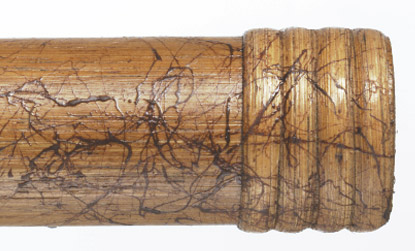Chemistry of Water-Based Polyurethane Coatings
Here's some information about waterbased two-part poly formulas, the health risks the ingredients may pose, and product availability. March 29, 2006
Question
Does waterbased 2k poly exist, and if so, does anyone use it? What's the verdict? And what are you using it for (cabinets, furniture, millwork, interior, exterior, etc.)? What brands?
Forum Responses
(Finishing Forum)
From contributor O:
Look at products in the flooring industry. I used Pacific Strong on my own white oak floors four years ago and the coating is really performing well. It's unbelievably durable and I think it was between $65-80/gallon at the time. I don't know if you could spray, but it mops out well, levels, etc. At that time, the unmixed catalyst was a health hazard.
From contributor S:
That would have been polyfunctional aziridine, used to get the acrylic base to cross-link. Pacific Strong could be used without it, as the acrylic would still film-form, like any latex product. It was better to use the hardener. Various companies have developed waterborne 2K polys, but I don't know who uses them in the States.
From Bob Niemeyer, forum technical advisor:
ICA has a full line of 2k H2O urethanes. Only several of the products are currently imported due to demand. Not very many people looking for very high end H2O products yet. Aziridine crosslinkers are nasty stuff if you plan on spraying a product. ICA uses Iso based hardeners and is the only manufacturer to have won the "Life" award in Europe with such a product.
From contributor O:
Are you saying that "iso-hardeners" are safer than aziridine? Is it that simple, or are there some qualifications that need to be added? Your expertise is greatly appreciated, as not many people with your level of technical knowledge or responsibility as a moderator to be objective make claims about the safety of coatings or their ingredients. Is there something else that you can say besides aziridine is bad and ICA products are good?
Too bad ICA's distribution network isn't as advanced as its technology. Perhaps hard science that demonstrated why it's a superior system of coatings would stimulate demand in the USA for waterbornes and the distribution would grow in response. No one doubts that water is where we're headed. We're moving away from short term profits - oil.
From contributor S:
As the isocyanate is "encapsulated" in a hydrophobic state in water, until the water is lost via evaporation, the iso does not become available for reaction. Theoretically, if you inhaled droplets of the iso suspension, the iso would stay encapsulated in your lungs, the droplets would be moved out of the lungs by the cilia that line the surfaces, up to the back of your throat. You then have the choice to spit or swallow. I don't know if the theory has been tested on humans, but they still recommend using air-fed masks to be on the safe side.
The switch away from oil in Europe is being driven by the fact that oil is a good source of revenue for governments. Would you pay $1.45-$1.50 per litre for your gas? We do. That's why we tend to drive cars with engines under 2000cc. If George Dubya found out about it from Phoney Tony and tried to implement it, he wouldn't be in office for very long!
From contributor J:
As an occasional sprayer of a waterborne acrylized urethane that requires a polyfunctional aziridine crosslinker for optimum results, I am very interested in knowing how much personal protection one needs from the evil crosslinker.
The aziridine by itself is, of course, a very toxic material. But what is the danger level after it has been mixed into the finish at 2 percent? My spray area is well ventilated, and I use the standard half mask respirator fitted with a cartridge rated at TC-23C-1062. I wear it both when spraying and mixing. The cartridge is approved for organic vapors. But is it good enough? What level of hazard is created by those small droplets of overspray and the molecules that evaporate from them? Can the nasty stuff make it's way all the way through an activated carbon filter rated for organic vapors? Can they be absorbed through your skin, or eyes? Inquiring minds want to know...
From the original questioner:
What brand are you using and where do you get it? I'd like to check this stuff out but can't seem to decide what to try. Most of the few companies I've found that have it or make it are ones I have no experience with and some I've never heard of. Does anyone know how to get the ICA? My distributor is tired of them and is not going to do business with them much longer, and they never heard of the h20 anyway.
From contributor J:
The product is Polyvar from SDA Craft Technologies. It's remarkable. I've been using the white satin. They are a small company in southern California. Fortunately for me, a local paint store here in northern Calif. is a dealer. Otherwise, as an amateur, I probably wouldn't be able to purchase it in small quantities. The last time I tried to email SDA, it didn't work too good, so I'd suggest a phone call. Their number is on the website.
From contributor H:
If this stuff is so deadly, what's the point? I think when most people think about waterborne, they perceive some healthy and environmentally friendly benefits. Just use solvent 2k poly. There are plenty of proven, readily available brands around (okay, maybe not in California).
